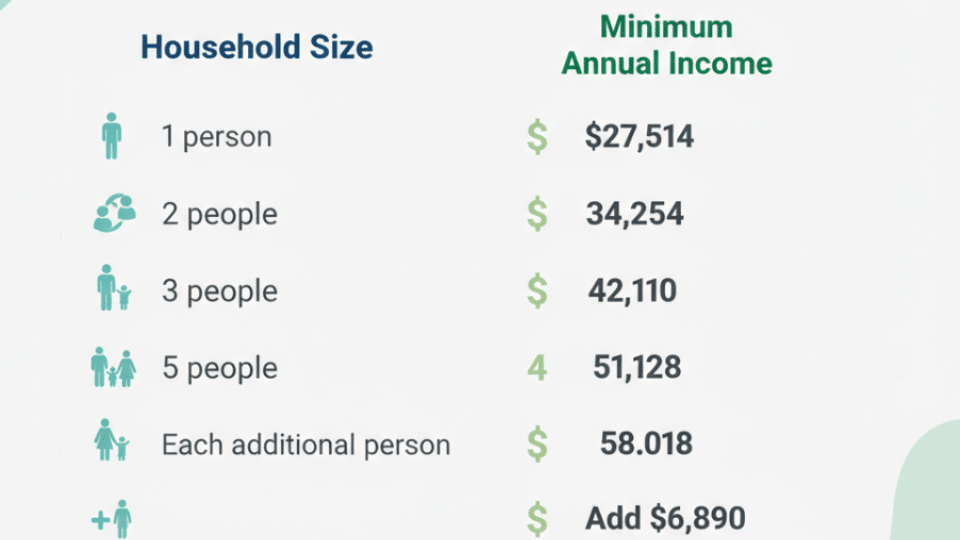Have you ever dreamed of bringing your loved ones closer to build a life together in a new country?
Family sponsorship immigration offers that beautiful opportunity, but navigating the maze of requirements, income thresholds, and paperwork can feel overwhelming.
The good news is that thousands of families successfully reunite each year through this process.
Whether you’re hoping to sponsor your spouse, parents, or children, understanding the eligibility rules and financial requirements is crucial for success.
Though sponsorship involves various requirements and procedures, the opportunity to build a life together with your loved ones is incredibly rewarding. By the end, you’ll have a clear roadmap to bring your family together.
Understanding Sponsor Requirements
Family sponsorship immigration allows you to sponsor specific family members, but the rules are quite specific about relationships and circumstances.
For immediate family members, you can sponsor your spouse or common-law partner, your unmarried children under 22 years old, your parents and grandparents, and, in certain specific circumstances, your siblings, nephews, or nieces.
The program also covers special cases, including adopted children with proper documentation, children over 22 who are financially dependent due to disability, and orphaned relatives under 18 if you’re their only living relative.
Understanding these relationship requirements is crucial before starting your application, as sponsoring someone outside these categories typically isn’t possible through family class immigration.
Key Sponsor Requirements:
- Be a citizen or permanent resident of the country
- Be at least 18 years old
- Sign an undertaking to financially support the sponsored person
- Prove you can meet the minimum income requirements
- Have no criminal record or immigration violations
- Not receiving social assistance (except for disability)
Meeting Income Requirements for Family Sponsorship
The income requirements are often the biggest hurdle for sponsors. These rules exist to ensure you can financially support your family members without them needing government assistance.
Income requirements vary based on your household size and the number of people you’re sponsoring:

The income requirements for family sponsorship follow a progressive scale that increases with the size of your household. For a single-person household, you need to demonstrate a minimum annual income of $27,514.
This threshold increases to $34,254 for two people and continues to rise to $42,110 for three people.
The requirements become more substantial for larger families, reaching $51,128 for a family of four and $58,018 for a family of five. If your household includes more than five people, you’ll need to add an additional $6,890 for each extra person.
These escalating thresholds reflect the government’s expectation that larger households require proportionally higher incomes to support additional sponsored family members without relying on public assistance.
Note: These figures are examples and vary by country and year. Always check current government guidelines.
Understanding the Affidavit of Support
The affidavit of support is a legal document in which you promise to provide financial support to your sponsored family member.
This binding agreement typically lasts between 3 and 20 years, depending on the nature of the relationship and the age of the person being sponsored.
As part of this legal obligation, you’re responsible for repaying any government benefits they receive during this period.
To prove your financial capacity, you must provide comprehensive income documentation, including tax returns, employment letters, and bank statements.
It’s essential to note that this contract remains valid even if your personal circumstances change, such as a divorce or separation from the sponsored person.
Co-Sponsor Requirements
If you don’t meet the income requirements alone, you can use a co-sponsor to help qualify. A co-sponsor essentially adds their income to yours to meet the minimum thresholds.
- Must be a citizen or permanent resident
- Must meet income requirements for their own household plus sponsored persons
- Signs the same legal obligations as the primary sponsor
- Cannot be the person being sponsored
- Must provide their own financial documentation
How to Apply for Family Sponsorship?
Successfully sponsoring family members requires careful attention to timing, documentation, and procedures. Getting these elements right from the start can save you months of delays and additional requests.
Phase 1: Preparation and Documentation
Gather Your Documents First: The first step involves collecting all required documents, which form the foundation of your application. You’ll need birth certificates, marriage certificates, passport copies, and photos. Don’t forget police clearance certificates and medical examination results.
Also, prepare your financial documents, including tax returns, pay stubs, and bank statements. Most importantly, gather solid proof of relationship evidence that demonstrates your connection to the person you’re sponsoring.
Complete All Application Forms: Once your documentation is ready, focus on completing the necessary forms.
This includes the main sponsorship application and principal applicant forms. You’ll also need any country-specific supplementary forms and the crucial affidavit of support documents that legally bind you to the financial commitment.
Phase 2: Submission and Processing
Submit Your Complete Package: Now it’s time to submit all the necessary documents. Pay all required fees upfront and submit the entire package to the designated processing center.
Keep copies of everything for your records and get a confirmation receipt with a tracking number.
Handle Biometrics and Interviews: Next, schedule any required biometric appointments. Prepare thoroughly for potential sponsor interviews and respond promptly to requests for additional information during the processing stage.
Phase 3: Decision and Next Steps
Wait for Application Review: Your application undergoes a comprehensive review, which includes background checks, medical examination reviews, and a final eligibility assessment.
Receive Decision and Plan Next Steps: Upon approval, you’ll get a notification with clear instructions. The process includes visa issuance or immigration document preparation, as well as guidance on travel arrangements and arrival planning for your sponsored family member.
Processing Times for Family Sponsorship
Understanding realistic timelines helps manage expectations and plan accordingly.
Different sponsorship categories have vastly different processing speeds and waiting periods. Planning around these timelines ensures you’re prepared for the journey ahead.
| Sponsorship Category | Application Processing | Total Time (Submission to Arrival) |
|---|---|---|
| Spouse/Partner | 8-12 months | 10-14 months |
| Parent/Grandparent | 12-24 months | 2-7 years (due to annual limits) |
| Dependent Children | 6-10 months | Faster if included with spouse application |
Please note that these timelines may vary depending on your specific situation and the current processing volumes at immigration offices.
Factors That Impact Family Sponsorship Times
Several key factors can impact how quickly your application moves through the system:
- Application Completeness: Missing documents or errors can cause significant delays, so ensure everything is included upfront
- Country of Origin: Some countries require additional security checks that extend processing time beyond standard timelines
- Medical Examination Requirements: These vary by country and can add weeks or months to your overall timeline
- Response Time to Document Requests: The speed at which you provide additional information directly affects your processing speed.
- Annual Quota Limitations: Certain sponsorship categories, particularly those for parents and grandparents, have caps that create substantial waiting periods.
Common Questions About Family Sponsorship
1. Can I sponsor my parents if I don’t meet the income requirements?
Unfortunately, no. Income requirements are mandatory for parents sponsoring a child. However, you can use a co-sponsor or wait until your income increases.
2. What happens if my financial situation changes during processing?
You must notify immigration authorities of significant income changes. A reduced income could affect your application if it no longer meets the requirements.
3. Can I sponsor multiple family members at once?
Yes, but your income requirements increase for each additional person sponsored. You must meet the combined threshold for your entire household.
4. Do I need a lawyer for family sponsorship?
While not required, complex cases or those involving previous immigration issues may benefit from professional help. Many families successfully complete the process independently.
5. What if my sponsored family member can’t find work immediately?
As the sponsor, you’re financially responsible for them during the undertaking period, regardless of their employment status.
Final Thoughts
Family sponsorship immigration opens doors to countless opportunities for building stronger family bonds and creating new beginnings together.
The process requires patience, careful preparation, and meeting specific financial obligations, but the reward of reuniting with loved ones makes every step worthwhile.
Remember that success comes from thorough preparation, honest documentation, and meeting all requirements before submitting your application.
Take time to understand the income obligations, gather complete documentation, and plan for realistic processing timelines.
The process may seem complex, but thousands of families navigate it successfully every year. With proper preparation and realistic expectations, you can too.
Who are you hoping to sponsor first, and what’s your biggest question about the process?






































